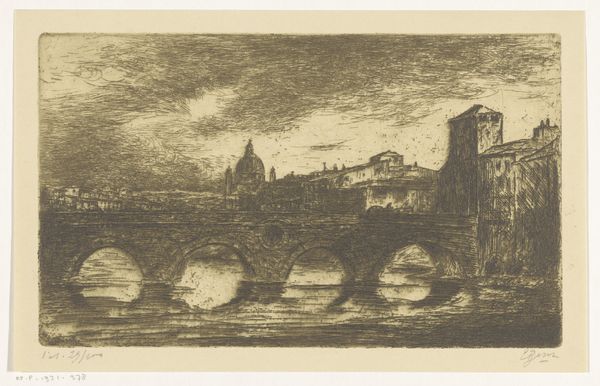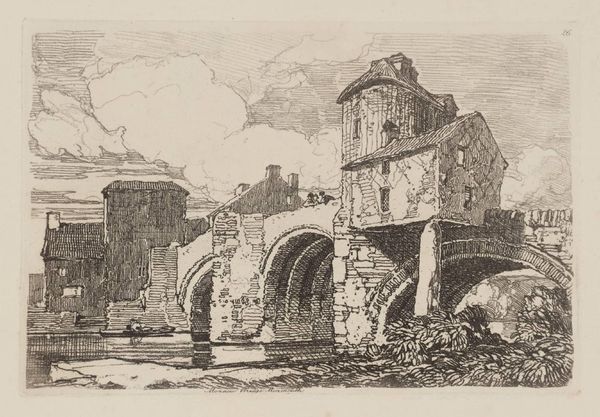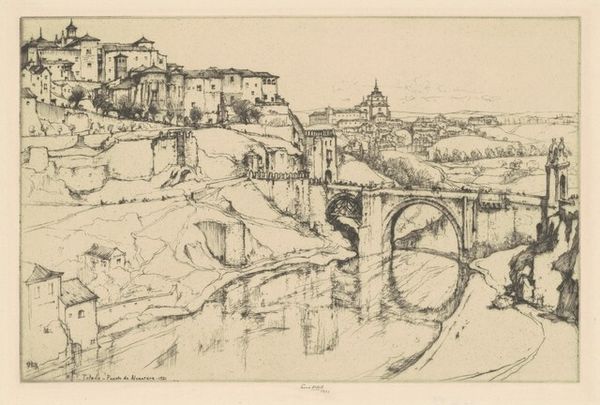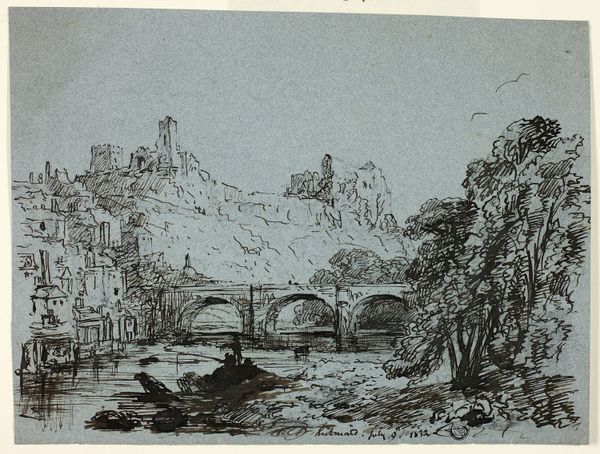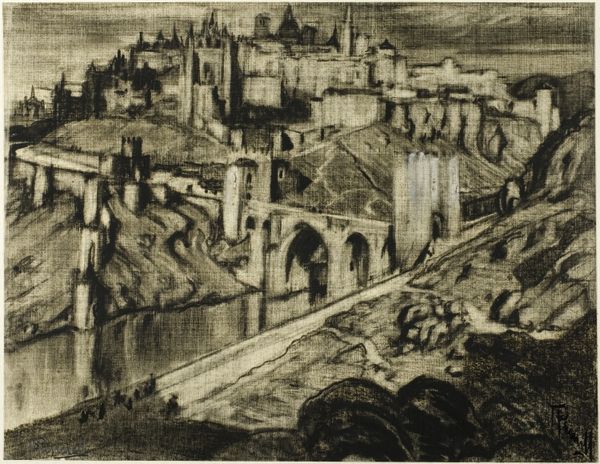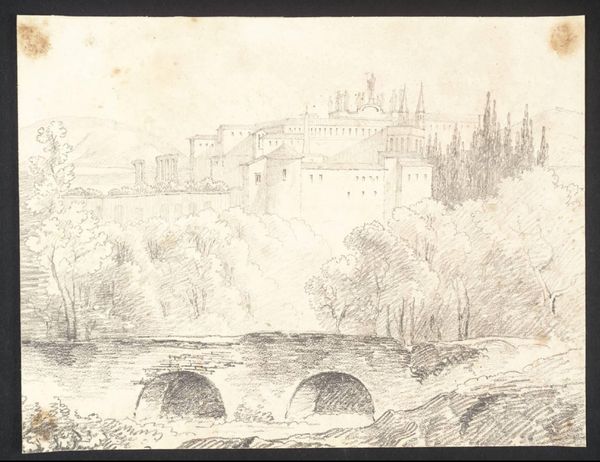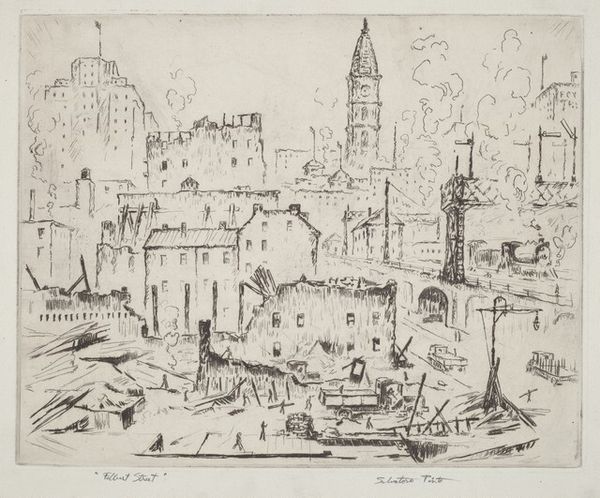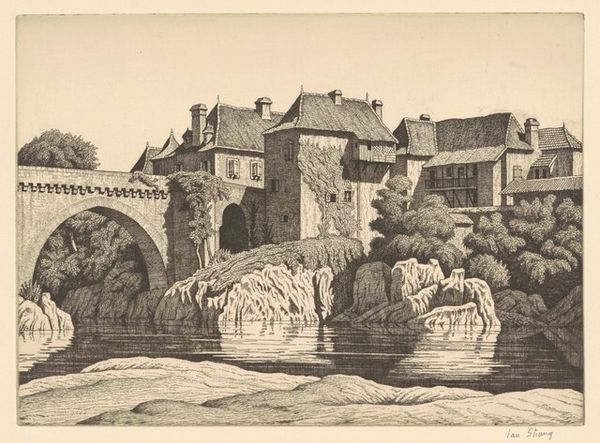
drawing, print, etching, ink
#
drawing
#
ink drawing
# print
#
etching
#
landscape
#
ink
#
cityscape
#
realism
Copyright: National Gallery of Art: CC0 1.0
Editor: This is "Spoleto - Italy," an etching in ink by Ernest D. Roth from 1951. The detail is incredible! It almost feels like a snapshot in time, capturing the timeless beauty of this Italian cityscape. What do you see in this piece? Curator: I see Roth engaging with a well-established tradition of depicting European cities, particularly Italian ones, that goes back centuries. Prints like these served as both souvenirs and disseminators of culture, shaping perceptions of these places. Consider how the print medium itself democratizes access to art; rather than a unique painting for the wealthy elite, here’s an affordable image circulating within a broader public. Do you think that changed the way people related to places like Spoleto? Editor: That's a really interesting point! I hadn't thought about the print being accessible and how it affected a broader understanding of Spoleto, beyond just the wealthy traveling to Italy for the Grand Tour. Curator: Exactly. And think about the choices Roth makes. He doesn't focus on monumental architecture or famous landmarks necessarily, but a more everyday scene. A bridge, the surrounding buildings, suggesting the lived experience. He’s participating in shaping the image of Italy for an American audience particularly, wasn't he? What’s he showing, and maybe not showing, by depicting this view of the city? Editor: Well, there aren't any people... the scene is static, really focused on the buildings and landscape... like he wanted to highlight the place itself, separate from contemporary life? Curator: Precisely. By focusing on the enduring architectural elements, the implication is, these locations are places imbued with a grand sense of History that surpasses modern transient events. An image of Italy presented to the public during a Post War recovery Era with notions and nostalgia, but still affected by Roth's personal filters. Editor: That really makes me think about the power of art in shaping collective memories and understandings. Thanks, that was so helpful. Curator: My pleasure! Thinking about art in this context opens so many avenues to see how imagery works to sway hearts and minds.
Comments
No comments
Be the first to comment and join the conversation on the ultimate creative platform.
